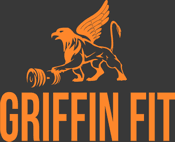Ever suffered with a hamstring strain?
by connor whittall in Training

Ever suffered with a hamstring strain? Well a strain is when a muscle is stretched too much and tears. It is also called a pulled muscle. A strain is a painful injury. It can be caused by an accident, overusing a muscle, or using a muscle in the wrong way
Causes
A strain may be caused by:
- Too much physical activity or effort
- Improperly warming up before a physical activity
- Poor flexibility
The hamstrings are tendons (strong bands of tissue) at the back of the thighs that attach the large thigh muscle to the bone. These group muscles located in the posterior compartment of the thigh are collectively known as the hamstrings. They consist of the biceps femoris, semitendinosus and semimembranosus, which form prominent tendons medially and laterally at the back of the knee. These muscles origin, insertion and actions are broken down;
- Biceps femoris- Biceps femoris muscle has two heads – a long head and a short head. It is the most lateral of the muscles in the posterior thigh – the common tendon of the two heads can be felt laterally at the posterior knee.
- Attachments: The long head originates from the ischial tuberosity of the pelvis. The short head originates from the linea aspera on posterior surface of the femur. Together, the heads form a tendon, which inserts into the head of the fibula.
- Actions: Main action is flexion at the knee. It also extends the thigh at the hip, and laterally rotates at the hip and knee
2. Semitendinosus – The semitendinosus is a largely tendinous muscle. It lies medially to the biceps femoris, and covers the majority of the semimembranosus.
- Attachments: It originates from the ischial tuberosity of the pelvis, and attaches to the medial surface of the tibia.
- Actions: Flexion of the leg at the knee joint. Extension of thigh at the hip. Medially rotates the thigh at the hip joint and the leg at the knee joint.
3. Semimembranosus- the semimembranosus muscle is flattened and broad. It is located underneath the semitendinosus.
- Attachments: It originates from the ischial tuberosity, but does so more superiorly than the semitendinosus and biceps femoris. It attaches to the medial tibial condyle.
- Actions: Flexion of the leg at the knee joint. Extension of thigh at the hip. Medially rotates the thigh at the hip joint and the leg at the knee joint.
A hamstring injury can occur if any of the tendons or muscles are stretched beyond their limit. They often occur during sudden, explosive movements, such as sprinting, lunging or jumping. But they can also occur more gradually, or during slower movements that overstretch your hamstring. Recurring injury is common in athletes and sportsmen, as you’re more likely to injure your hamstring if you’ve injured it before.
Injury classification
- Mild hamstring strains (grade 1) will usually cause sudden pain and tenderness the back of your thigh. It may be painful to move your leg, but the strength of the muscle shouldn’t be affected.
- Partial hamstring tears (grade 2) are usually more painful and tender. There may also be some swelling and bruising at the back of your thigh and you may have lost some strength in your leg.
- Severe hamstring tears (grade 3) will usually be very painful, tender, swollen and bruised. There may have been a “popping” sensation at the time of the injury and you’ll be unable to use the affected leg.
Recovery time frame
Recovering from a hamstring injury may take days, weeks or months, depending on how severe the strain or tear is.
A completely torn hamstring (grade 3) may take several months to heal and you’ll be unable to resume training or play sport during this time.
If you’ve read this and have suffered with a hamstring strain or know anyone that has then consider seeing your GP, local sports therapist or physiotherapist.
Enjoy 🙂
